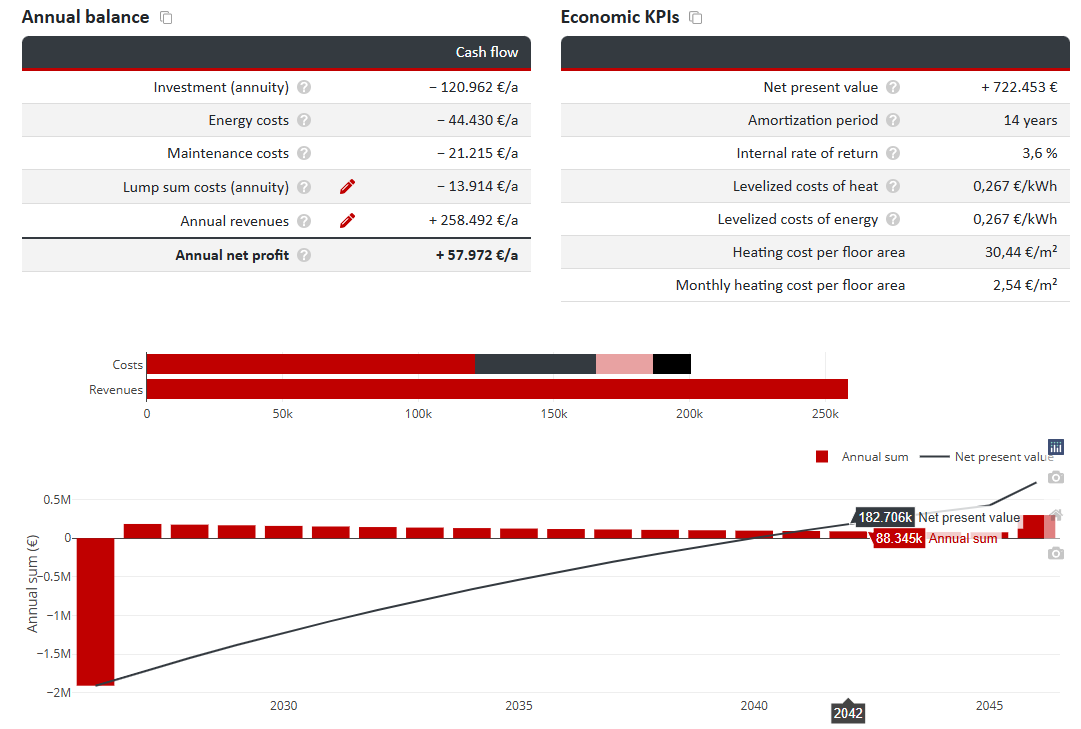Economic Feasibility Assessment in Energy Planning
The economic feasibility assessment is an essential part of any energy planning process – whether for district heating networks, renewable energy systems for individual buildings, or heat pump solutions. It ensures that investments are profitable in the long run and provides a solid decision-making basis for operators, investors, and municipalities. In this article, you will learn which factors play a role and why an early economic assessment is crucial for project success.
What is an economic feasibility assessment?
An economic feasibility assessment analyzes whether a planned energy supply is economically viable. It considers various cost and revenue structures and compares them with potential alternatives. Especially in the planning of renewable energy solutions, this assessment is indispensable since sustainable technologies often require higher initial investments but offer long-term savings and independence from fossil fuels.
Which costs and factors are analyzed?
The economic feasibility assessment covers a variety of factors affecting both investment costs and ongoing operating costs.
1. Investment costs
- Heat generators: Acquisition costs for heat pumps, biomass boilers, or solar thermal systems
- Network infrastructure: Piping for district heating networks, building connections
- Storage technologies: Short- and long-term storage, buffer solutions
- Building technology (TGA): Heat transfer stations, control systems
- Planning costs: Engineering services, feasibility studies, HOAI services
2. Operating costs
- Energy costs: Electricity for heat pumps, fuel costs for biomass
- Maintenance and servicing: Regular inspections and repairs
- Network losses: Heat losses in district heating networks
3. Revenue and savings potential
- Reduction of fossil fuel consumption: Lower gas or oil costs
- Revenue from heat sales: Particularly relevant for district heating networks
- Subsidies and grants: BEW funding, KfW grants, BAFA subsidies

Comparison: Renewable energy systems vs. conventional heating technology
A thorough economic feasibility assessment enables the comparison of renewable systems with conventional alternatives. It often becomes evident that while renewable energies have higher initial costs, they are more economical in the long run.
| Criterion | Renewable energy | Fossil fuel heating systems |
|---|---|---|
| Investment costs | Higher | Lower |
| Operating costs | Lower | Increasing (fuel prices) |
| Subsidies | Attractive (BEW, BAFA, KfW) | Minimal |
| CO₂ balance | Very good | Poor |
When is an economic feasibility assessment worthwhile?
A detailed economic assessment is particularly useful for:
- New construction or building renovations to select the optimal heating system
- District heating network planning to evaluate feasibility and connection costs
- Implementation of heat pump solutions to assess electricity costs and efficiency
- Investment decisions for municipalities, utilities, and companies
Summary
The economic feasibility assessment is the first and most crucial step in planning sustainable energy projects. It helps minimize economic risks, identify savings potential, and make informed investment decisions. An early analysis ensures that projects remain viable in the long term – especially for district heating networks, heat pump solutions, and renewable energy systems.
This might also interest you
nPro software
Plan your energy system with nPro!

 English
English
 Deutsch
Deutsch


